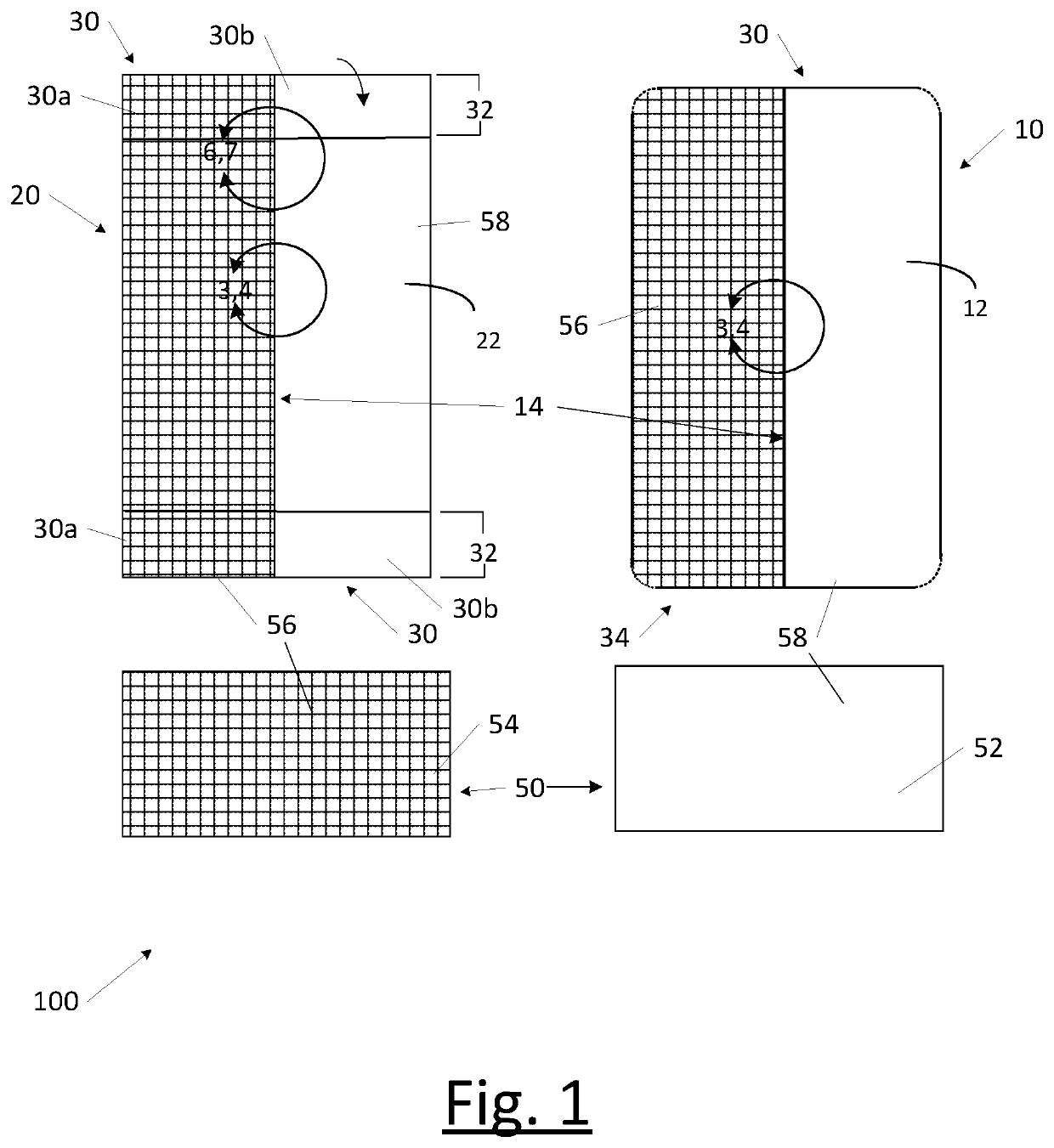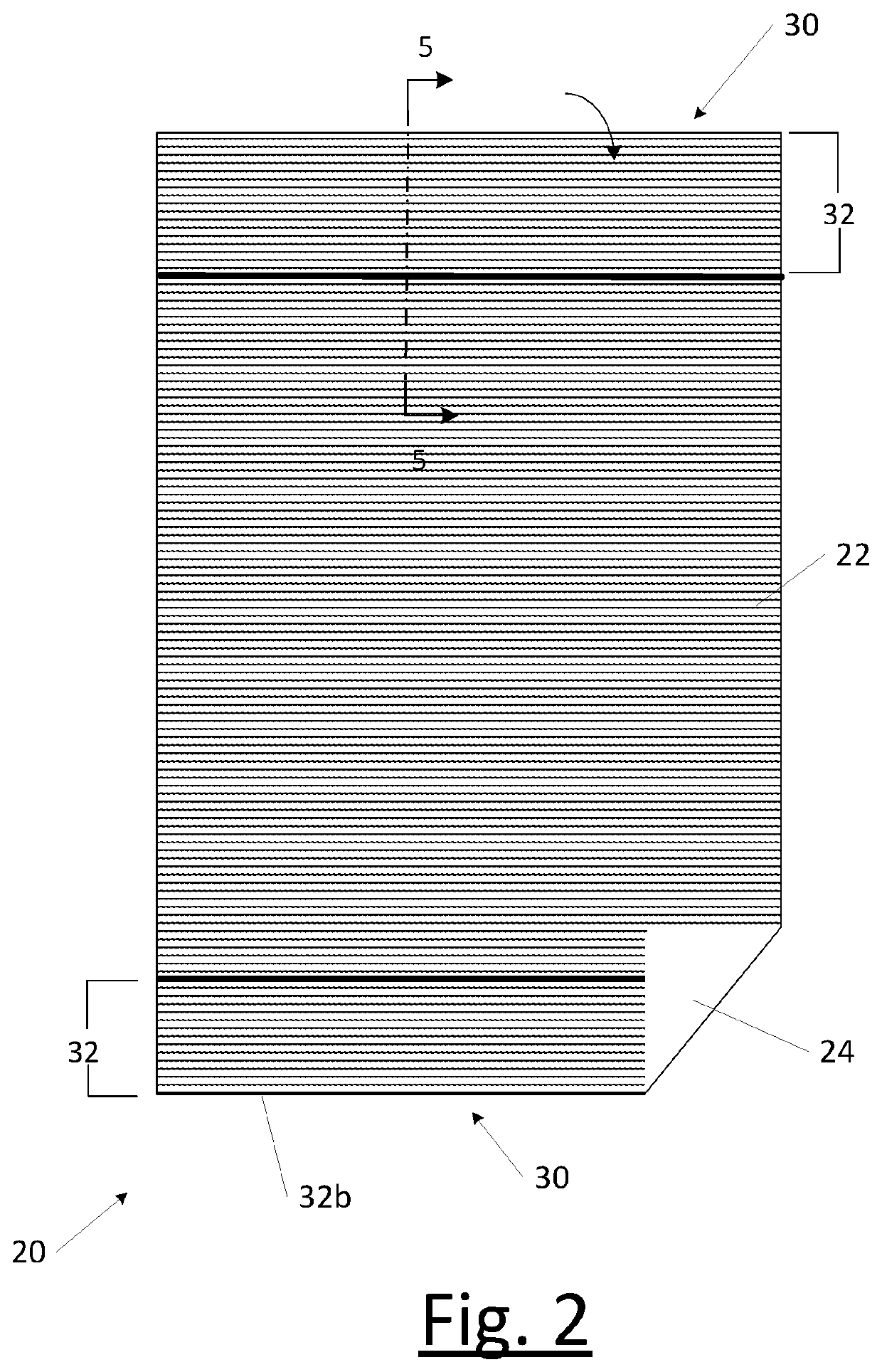Combination Linens Bedding Arrangement
- Summary
- Abstract
- Description
- Claims
- Application Information
AI Technical Summary
Benefits of technology
Problems solved by technology
Method used
Image
Examples
Embodiment Construction
[0029]A combination linens bedding set according to the invention 100 is shown in FIGS. 1-9, with a prior art linens bedding set 200 shown in FIG. 10.
[0030]Turning to the Figures, it is instructive to first review the prior art linens bedding set 200 and its prior art flat sheet 220 and fitted sheet 210. The flat sheet 210 has a header 230, an opposed footer 234. The fitted sheet 220 has a header 230 at which there is a decorative hem 232 formed, a footer 234 and a footer hem 236 sewn into the footer end of the flat sheet 220. The footer hem 236 is different from the decorative hem 232 and the prior art teaches that the decorative hem 232 is always positioned at a head of a bed, where the pillows are positioned, and the footer hem 236 is always positioned at a foot of the bed. The decorative header 232 has three functions: (1) to visually indicate which end of the flat sheet 220 is the header, and (2) provide a reinforced edge at a header of the flat sheet 220, which is subject to m...
PUM
 Login to View More
Login to View More Abstract
Description
Claims
Application Information
 Login to View More
Login to View More - R&D
- Intellectual Property
- Life Sciences
- Materials
- Tech Scout
- Unparalleled Data Quality
- Higher Quality Content
- 60% Fewer Hallucinations
Browse by: Latest US Patents, China's latest patents, Technical Efficacy Thesaurus, Application Domain, Technology Topic, Popular Technical Reports.
© 2025 PatSnap. All rights reserved.Legal|Privacy policy|Modern Slavery Act Transparency Statement|Sitemap|About US| Contact US: help@patsnap.com



